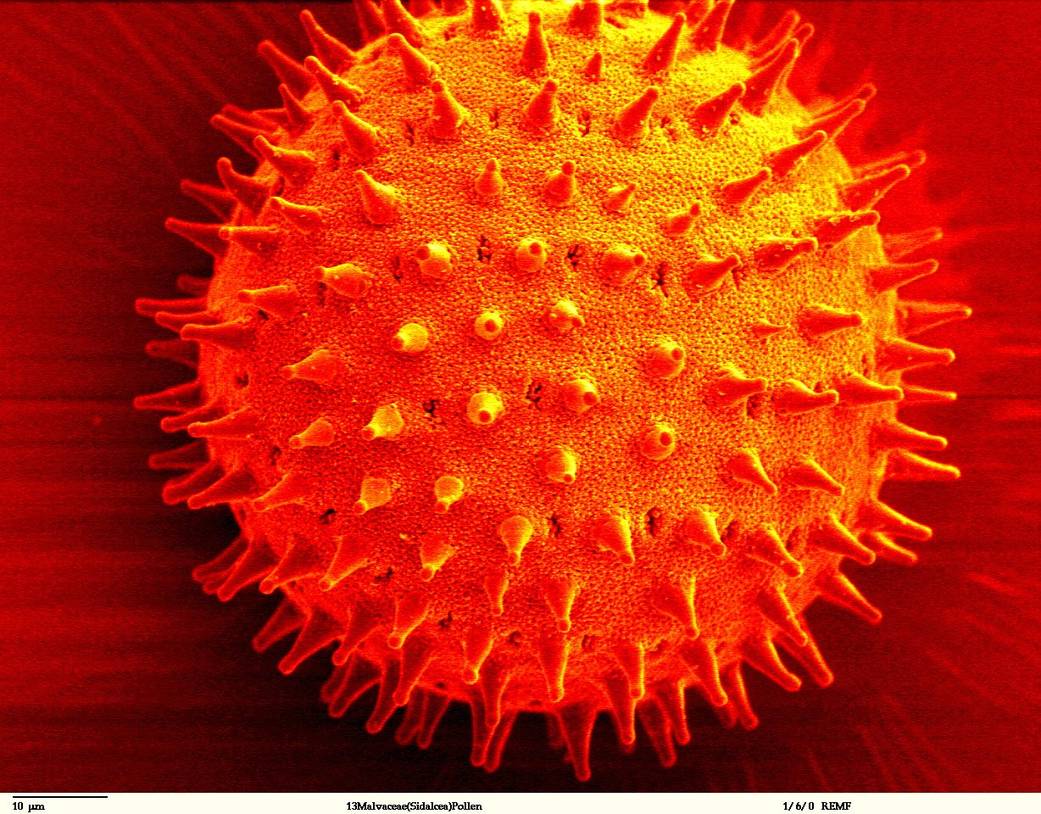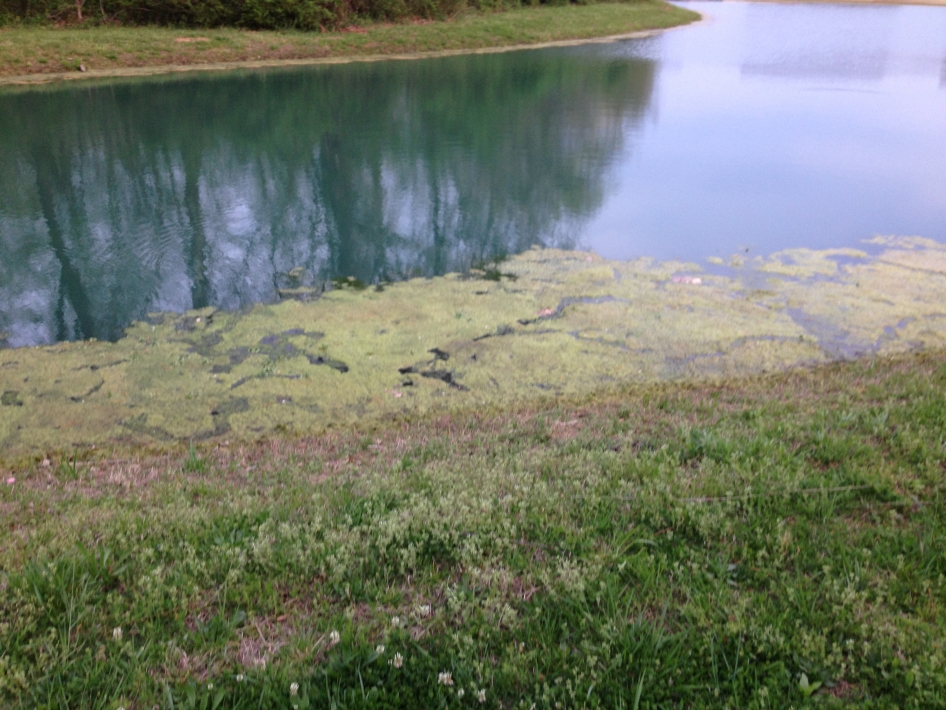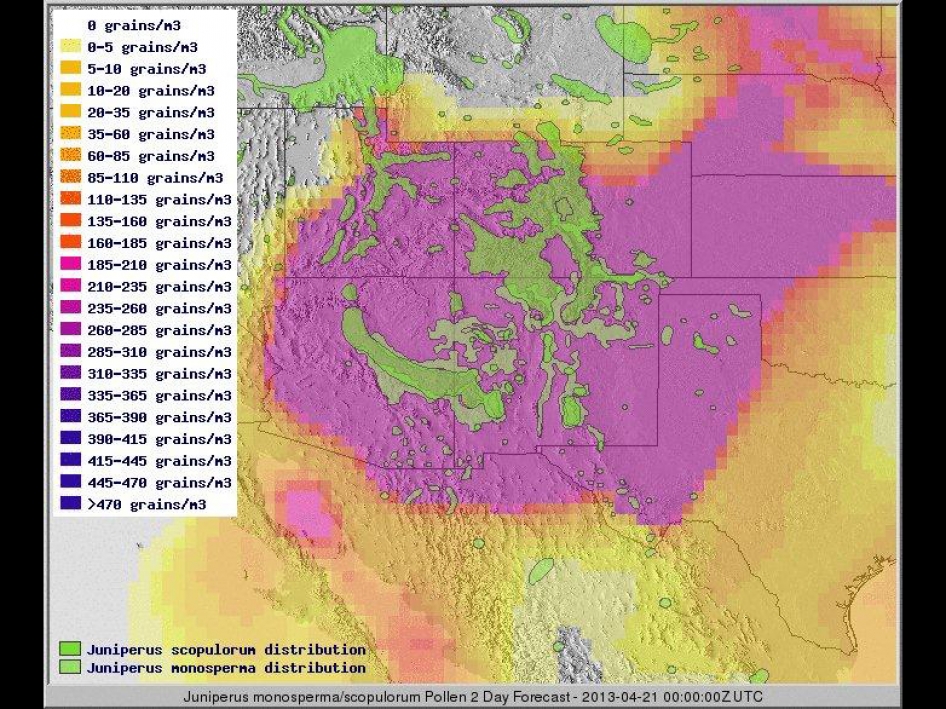It’s the yellowish coating on cars. It floats on ponds, blows with the spring breeze and serves as a potent irritant to allergy sufferers.
Now a NASA team is targeting pollen – and its work could help alleviate some of the suffering. Partnering with experts from academia, health organizations, the medical community and other federal agencies, the team is modeling pollen release cycles and concentrations in the American southwest to better forecast high-level pollen release and movement – potentially creating a better early-warning system to help protect allergy sufferers from the debilitating yellow dust.
“The concept of this project is to integrate Earth science data into a weather forecast model which can forecast pollen transport,” said Jeff Luvall, principle investigator and Earth scientist at NASA’s Marshall Space Flight Center in Huntsville, Ala. “A large percentage of the population suffers with allergies; this research could really help give people some relief.”
A more accurate pollen forecasting system could greatly benefit health programs and organizations, such as the Public Health Tracking program run by the Centers for Disease Control and Prevention in Atlanta and its partners in the New Mexico Environmental Public Health Tracking system. Better predictions and warnings about high pollen counts could minimize health problems for asthma sufferers, reduce emergency-room visits involving respiratory and cardiovascular complications, and reduce allergy-related absences from school and work.
“Since seasons vary, the onset of the pollen season can fluctuate by two to three weeks,” said Dr. Estelle Levetin, aerobiologist with the University of Tulsa. “The ability to forecast 72 hours ahead of pollen release and incursion would give us the opportunity to alert the public about incoming pollen and provide physicians extra time to treat patients before pollen arrives.”
For this study, scientists focused on pollen release from four species of juniper trees – some of the most potent pollen-producers in the plant kingdom – in parts of New Mexico, Texas and Oklahoma.
There are three typical pollen release periods, depending on the particular juniper species: The J. ashei species releases pollen from about Dec. 10 to Jan. 31; J. monosperma / J. scopulorum pollinates in March and April; and J. pinchotii delivers a last round of sneeze-inducing dust in October and November. Because it’s the only pollen in the air, the team focused on J. ashei species, for initial model development documenting pollen release throughout the region from December through February.
Most people think of fall and spring as allergy season, but there is a significant release of pollen from millions of acres of juniper trees in Texas and Oklahoma during the winter months. This release cycle can impact a huge population. The airborne pollen produced by these juniper trees has been well documented to affect inhabitants of cities and towns adjacent to woodlands where they’re concentrated. In fact, in January 1999, juniper pollen grains identified as coming from J. ashei trees in Texas were reportedly traced to in Ontario, Canada.
The distances traveled by that irksome yellow irritant don’t surprise Luvall. “Pollen from juniper trees is widely transported by the wind over long distances and can affect people in cities far from the pollen source,” he said. “NASA satellite data has been extremely useful in tracking the changes in the juniper canopy, which is a precursor to the release of pollen.”
Satellite observations were utilized from a pair of special sensors called the Moderate Resolution Imaging Spectroradiometers, or MODIS, orbiting Earth aboard NASA’s Terra and Aqua satellites. MODIS senses the growth stages of different plants by observing color changes that occur in the plant canopy. Certain color changes reveal when the plants below – in this case juniper trees – are about to release their pollen.
Researchers recruited volunteer observers using the National Phenology network to observe the timing of pollen production and release in junipers by watching pollen cone development. Those data were compared with remote sensing observations and six ground-based pollen samplers placed in strategic locations. Researchers collected and analyzed pollen grains taken from the samplers and fed the results into a modeling program.
Capitalizing on an existing NASA model for dust observations, scientists modified the computer program to simulate the release and transport of pollen. They dubbed the new model the Pollen Regional Atmospheric Model, or PREAM. After analyzing two and a half years of data, the team learned that 10 a.m. is the peak release time for pollen in the three-state focus area studied – likely the result of climate factors such as humidity and temperature.
A PREAM output map of pollen provides early warning for conditions which exacerbate asthma and allergies alerts in the three-state region, thereby allowing suffers to take cover during pollen peaks.
Next, researchers plan to compare the results of their models with medical records and a more widespread series of ground-based pollen observations.
“This is good news for the public,” said Luvall. “NASA’s science mission begins here on Earth, with greater awareness and understanding of our changing planet, and solutions for protecting our environment, resources and human lives.”
The joint research effort is funded through a NASA Applied Sciences, Health program proposal called “Decision support through Earth Science Research Results,” an element of the NASA ROSES 2008 solicitation.
For more information, visit:


























